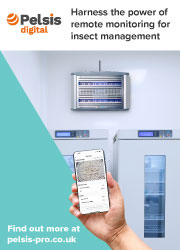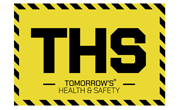Industry expert Tim Turney from Casella, a manufacturer of air monitoring equipment, shares his expert insights on protecting workers from silica dust.
The Health and Safety Executive (HSE) has refreshed its guidance on airborne respirable crystalline silica (RCS) to support brick and tile manufacturing, stonework and foundries ahead of manufacturing-focused inspections this Autumn and Winter. Commencing in October, the HSE will investigate manufacturing businesses where materials containing silica are used to assess whether suitable arrangements are in place to manage health and safety and that the measures comply with the Control of Substances Hazardous to Health Regulations 2002 (COSHH).
Crystalline silica
Silica is found in varying amounts in most rocks, sand, and clay, and is a major constituent in construction materials made from these resources, including bricks, tiles, and concrete. Workers can breathe in silica dust while cutting, sawing, drilling, or crushing materials. Silica has a crystalline form, which occurs naturally in varying amounts in any substance containing silica, that poses potential health concerns. Crystalline silica can damage tissue in the lungs and lead to lung disease, chronic obstructive pulmonary disease, or incurable silicosis.
As with any known workplace health risk, a correctly implemented scheme of controls using the hierarchy of controls is the most effective means of reducing worker exposure to respirable crystalline silica. This can help reduce both the likelihood of workers developing health complications such as silicosis and the potential legal ramifications for employers. Measures include a correctly executed program of air monitoring, which can include both monitoring at the site level and on an individual employee level using personal sampling pumps. Air monitoring can quantify exposure levels, or if controls are in place, check that they are effective and measure any residual risk.
In control
Businesses can measure worker exposure using personal sampling pumps. However, it is important that the pumps are used with the correct sampling head and in the case of respirable dust a cyclone and filter, which collects the particulate.
Once the sample is analysed by a laboratory, the level of exposure can be calculated. Action can then be taken to improve control measures to ensure exposure is reduced to as low as is practicably possible. Improvements have been made to different elements of personal sampling pumps over time. Battery technology, back pressure capability, accurate flow control, minimized pulsation, data download and the ability to be intrinsically safe have all been improved, ensuring measurement of an individuals’ exposure to harmful substances is as accurate as possible. Understanding these factors in which the personal sampling pump needs to operate effectively will allow employers to choose the most effective device suited to their working environment.
Correct implementation of personal sampling relies on a thorough understanding of practice, procedure, how sampling pumps function and use of the correct sampling head and filters.
Correct equipment, calibrated properly
Personal sampling pumps must adhere to the standard ISO 13137:2013. The standard sets limits for required flow stability and maximum permissible pulsation levels, enabling users of personal air sampling pumps to adopt a consistent approach for flow rate assessment. The standard provides a comprehensive framework that specifies test methods to determine performance of air sampling pumps and ensures that environmental influences such as air pressure and temperature have a minimal impact on the accuracy of the sampled air, which in turn could affect sample results.
Correct equipment—calibrated properly—and an awareness of the limitations and impact on data collection that the equipment itself can have should be at the forefront of correct air monitoring procedures as well as the fight against “the new asbestos.” Pumps, including the Apex2, that operate with a pulsation value of less than 10 percent and conform to all relevant ISO standards give industrial hygienists and site managers the peace of mind that data captured is reliable and unaffected by pump pulsation. Low pulsations are particularly important when sampling for crystalline silica as the sampling head is a cyclone, and only at low pulsation levels will it get the correct ‘respirable’ sample.
While awareness of silica’s negative health effects is on the rise, correct procedure, safety-focused culture, and the right equipment will ensure that the downward trend in silicosis mortality continues.
Bridging the gap
Employers have a legal duty to arrange suitable health and safety measures to ensure that they are compliant with the COSHH. Brick and tile manufacturers, foundries and stone working sites will all be held accountable for protecting their workers’ health.
With responsible employers’ collaboration with HSE guidelines, awareness can be raised of the life-changing respiratory conditions associated with pulmonary disease caused by silica dust.



































